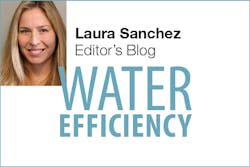Dental floss, wipes, contact lenses, medications, facial tissues… Each of these items may seem innocuous, but in wastewater treatment facilities, they can be highly destructive. When flushed down toilets and into sewer systems, these products can’t be dissolved by conventional methods. Instead, they clog pumps, tangle around mixers, contaminate waterways, and end up in the bellies of fish.
A recent New York Times article outlines the various personal care items that should not be flushed. It explains that the expense of dealing with these objects and removing them is passed along to ratepayers in utility bills. This makes us wonder whether better public education programs, clarifying what can and cannot be flushed, would be more efficient, saving time and money.
It seems many folks are unaware that dental floss is made of nylon or Teflon and can knot around mixers and pumps, or that kitty litter can swell to a remarkable 60,000 times its size when sent down the sewer. Others don’t realize that fish can swallow disposable plastic contact lenses or that flushed medications can build up to dangerous levels in waterways. And then there are the horrific clogs and fatbergs caused by “flushable” wipes.
A recent UK study revealed that the “majority of the sewer blockage material recovered from clogs across the country was comprised of non-flushable wipes.” Baby wipes were the biggest non-flushable culprit, accounting for 78% of identifiable products. Surface wipes, cosmetic wipes, and feminine hygiene products accounted for approximately 20%. Less than 1% was identified as products designed to be flushed.
The study, the biggest in-depth study of sewer blockages in the UK, was conducted throughout the summer of 2017. The report recommends a renewed and focused effort to raise awareness among consumers on the correct disposal of wipes and the use of a distinct “do not flush” symbol for all non-flushable wipes and disposable absorbent hygiene products.
What are your impressions? How does your municipality make the public aware of proper product disposal?
